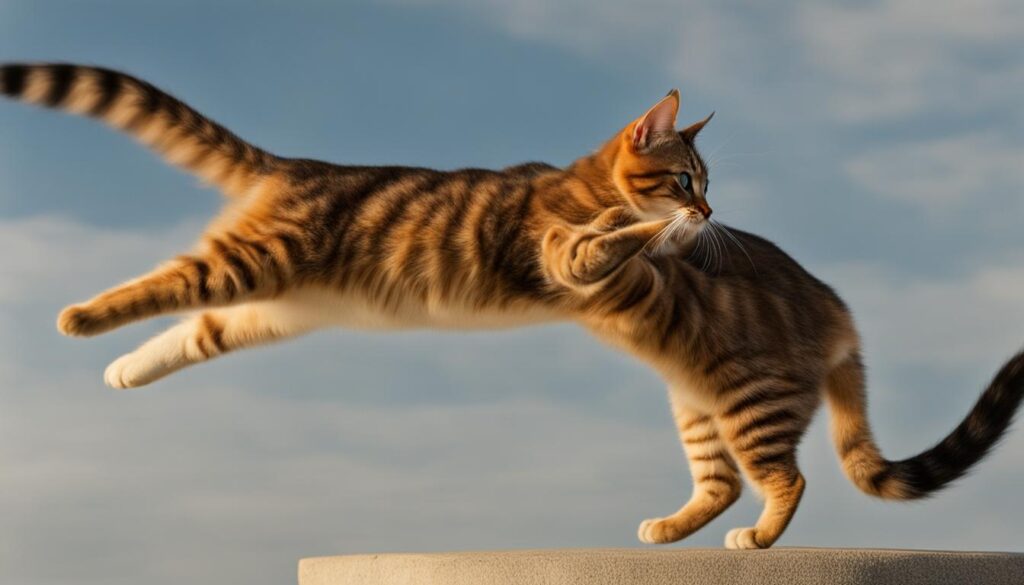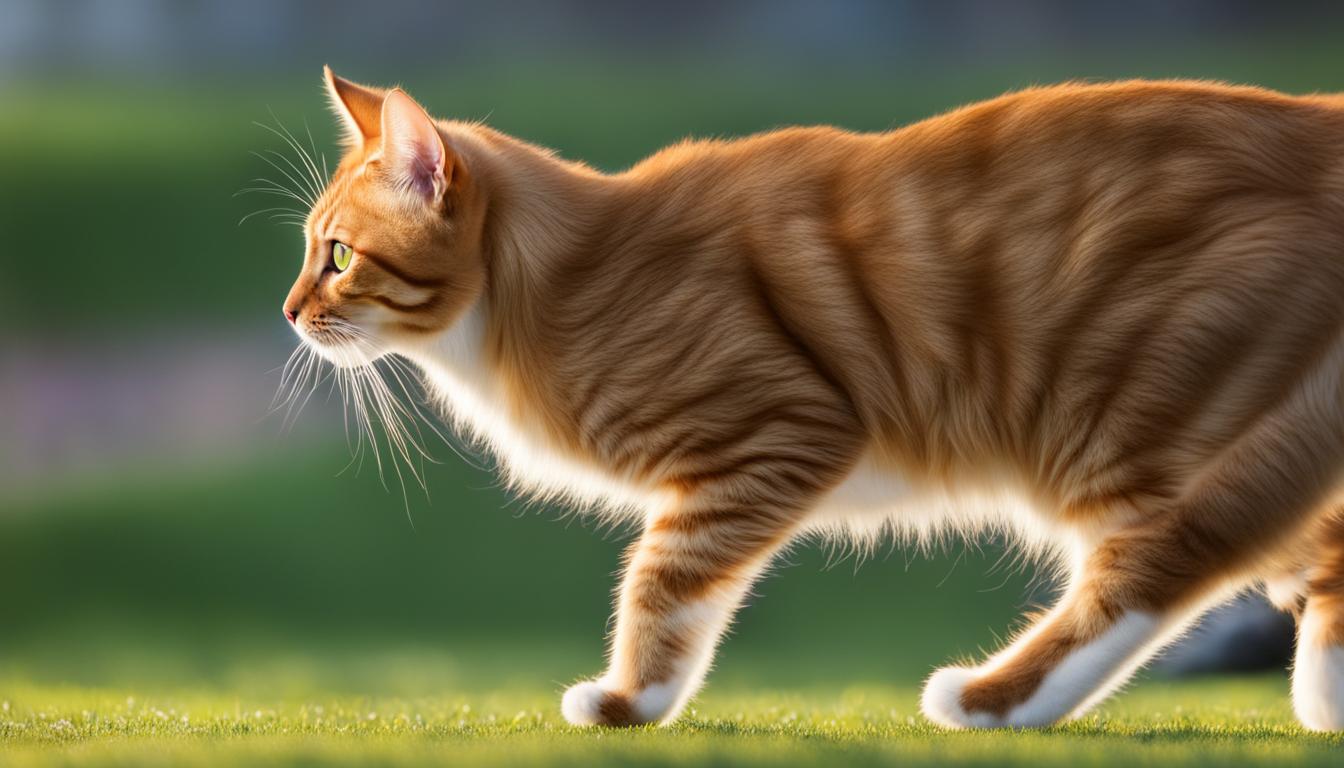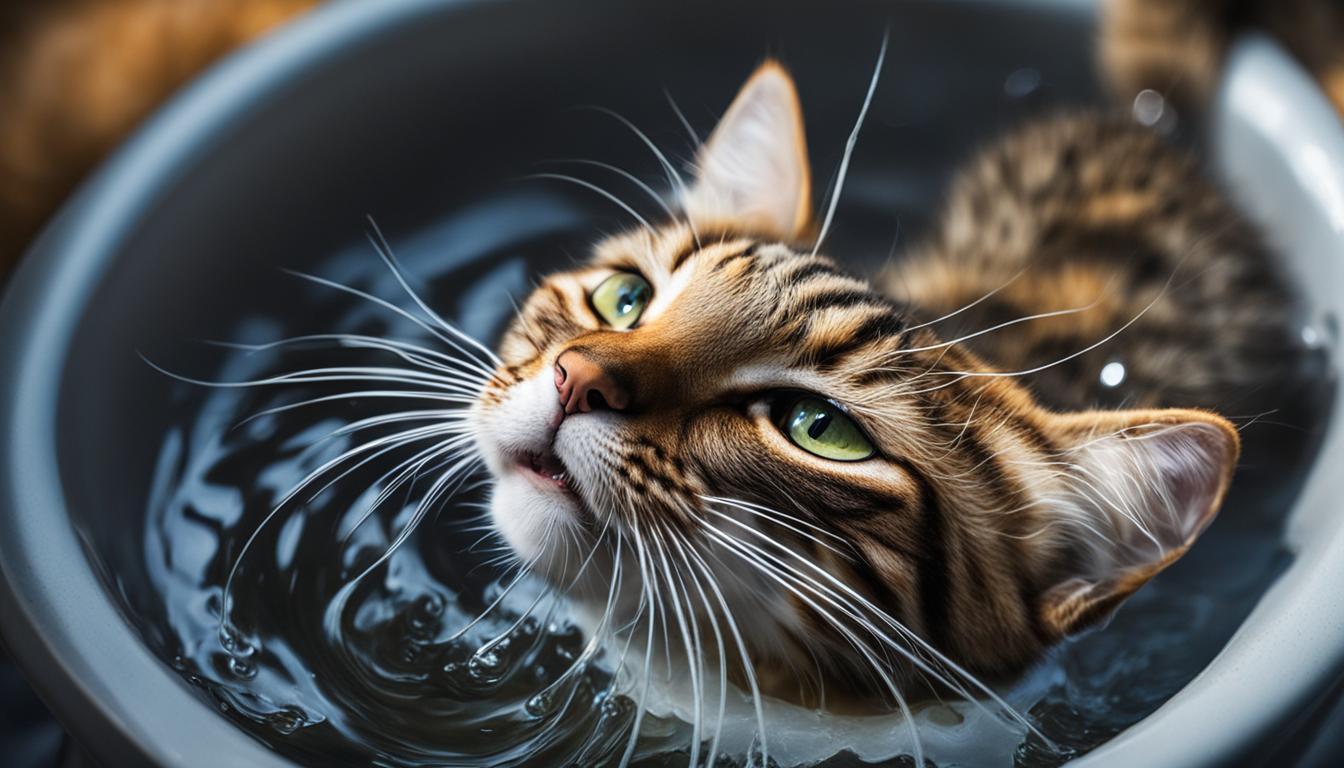Have you ever marveled at the graceful movements of a cat? The way they effortlessly twist and turn, leaping from one place to another with precision and flexibility. It’s truly a sight to behold! But have you ever wondered how they are able to move with such agility? The secret lies in the role of torque.
Torque, in simple terms, is the force that causes an object to rotate around an axis. In the case of cats, this rotational force is what allows them to perform their incredible acrobatic feats. It’s like having an internal engine that propels them forward and assists in changing directions.
When a cat wants to move, they unleash the power of their leg muscles and flexible spines. By contracting their leg muscles, they generate torque, which acts as a driving force, enabling them to leap high into the air or make quick turns effortlessly. It’s this combination of muscular strength and flexibility that gives cats their unparalleled agility.
But how do cat movements compare to those of other animals? Well, when we observe the movements of big cats in the wild or even compare domestic cats to their larger counterparts, we can see distinct differences in their techniques and abilities. Cats have evolved unique strategies to utilize torque effectively, making them masters of balance and coordination.
So, what are the factors that affect a cat’s movements? Age can play a role in a cat’s agility, with kittens being more flexible and nimble than older cats. The tail also plays a crucial part in a cat’s movements, acting as a counterbalance and aiding in balance and maneuverability.
As we delve deeper into the anatomy of a moving cat and explore the fascinating evolution of cat movements, we begin to uncover the secrets behind their graceful moves. Join me on this journey as we unravel the mysteries of torque and discover the incredible world of feline agility.
Key Takeaways:
- The role of torque is essential in a cat’s twist and turn movements, enabling their remarkable agility and grace.
- Cats utilize their leg muscles and flexible spines to generate torque and propel themselves forward or change directions.
- Comparing cat movements to other animals reveals unique techniques and abilities.
- Factors such as age and the tail affect a cat’s movements and agility.
- The anatomy of a moving cat and the evolution of cat movements hold fascinating insights into their graceful capabilities.
How Cats Use Torque to Move
When it comes to agility and graceful movements, cats are truly remarkable creatures. Their ability to twist, turn, and leap with precision is a result of their unique utilization of torque. So, how exactly do cats use torque to move?
Cats have powerful leg muscles that they contract in order to generate torque. This torque is what propels them forward or assists them in changing direction. Additionally, cats have flexible spines that enable them to twist and turn with ease, further enhancing their agility.
To improve agility in cats, there are various techniques that can be employed. One such technique is providing them with opportunities for physical exercise and play. This helps to strengthen their leg muscles and improve their overall coordination. Additionally, incorporating interactive toys and puzzles into their daily routine can help stimulate their minds and hone their reflexes.
Remember, a cat’s agility and movement are not solely dependent on torque. It’s a combination of several factors, including their balance, coordination, and keen sense of reflexes. So, while torque plays a significant role, it’s essential to consider the holistic nature of a cat’s movements.
Techniques to Improve Agility in Cats:
- Provide opportunities for physical exercise
- Incorporate interactive toys and puzzles
- Ensure a stimulating environment
- Encourage regular playtime and mental stimulation
By understanding how cats use torque to move and employing techniques to improve their agility, we can ensure that our feline companions lead active and fulfilling lives. So, let’s continue to marvel at their graceful movements and support them in maintaining their natural abilities.

Comparing Cat Movements to Other Animals
When examining the movements of cats and comparing them to those of other animals, it becomes clear that felines possess a unique set of skills and techniques. While cats may share some similarities in movement with other creatures, there are notable differences that set them apart.
Different Techniques in Big Cats vs Domestic Cats
One significant aspect to consider is the distinction between movements in big cats and domestic cats. Big cats, such as lions and tigers, rely on their sheer size and power to execute impressive movements. Their large bodies and muscular strength allow them to make swift and forceful leaps, showcasing their dominance in the animal kingdom.
On the other hand, domestic cats, being smaller in size, rely more on agility and precision in their movements. Their flexible spines and powerful leg muscles enable them to quickly change direction and navigate through narrow spaces with great finesse. This adaptability and grace make them masters of balance and coordination.
The Role of Adaptation in Cat Movements
Cat movements can also be attributed to the process of adaptation over generations. Cats have evolved to become skilled hunters, and their movements reflect this predatory nature. Their body structures have undergone modifications, such as the elongation of limbs and the development of retractable claws, enabling them to climb, pounce, and capture prey efficiently.
Additionally, their keen senses, including sharp eyesight and acute hearing, aid in their movements and make them highly efficient in their hunting strategies. Cats possess the ability to instinctively assess their surroundings and make split-second decisions, allowing them to execute precise movements with incredible speed and accuracy.
| Animal | Movement Characteristics |
|---|---|
| Cat | Agile, flexible, precise |
| Dog | Lively, energetic, bounding |
| Horse | Fast, powerful, rhythmic |
In comparison to other animals, such as dogs and horses, cats have a unique style of movement characterized by their ability to smoothly transition from a standstill to a sprint or change direction with minimal effort. This is attributed to their exceptional control over torque, which plays a crucial role in their twist and turn movements.
“Cats possess an innate grace that sets them apart from other animals. Their movements are a testament to their unrivaled agility and adaptability.”
In summary, the comparison of cat movements to those of other animals reveals the distinctive agility and grace exhibited by felines. Their techniques may vary depending on their size, adaptation, and predatory nature. Whether it’s the powerful leaps of big cats or the intricate maneuvers of domestic cats, these creatures have mastered the art of movement, making them fascinating subjects of study and admiration.
Factors Affecting a Cat’s Movements
When it comes to a cat’s movements, several factors can influence their agility and ability to utilize torque effectively. One significant factor is the age of the cat. Just like humans, cats experience changes in their bodies as they age, which can impact their flexibility and overall movement capabilities.
Young cats are typically more agile and flexible, able to maneuver with ease and grace. As cats get older, however, their muscles may become weaker and their joints may stiffen, leading to a decrease in their range of motion. This can affect their ability to generate torque and perform intricate movements.
The Role of the Tail in Movements
Another factor that plays a crucial role in a cat’s movements is their tail. The tail serves as a counterbalance and helps cats maintain their balance while performing various maneuvers. It acts as a rudder, allowing them to make quick and precise adjustments in their movements.
“The tail is an essential tool that cats use to enhance their agility and maintain stability during complex movements.” – Dr. Felicity Whiskers, Feline Biomechanics Expert
The length and flexibility of a cat’s tail can vary between different breeds and individuals, and it can have a noticeable impact on their overall coordination and balance. Cats with longer, more flexible tails may have an advantage when it comes to executing intricate movements that require precise control and balance.
Visualizing Cat Movements
To better understand the different factors affecting a cat’s movements, let’s take a look at a comparative table:
| Factor | Youthful Cats | Elderly Cats |
|---|---|---|
| Muscle Strength | High | Reduced |
| Flexibility | Excellent | Decreased |
| Tail Length | Varies | Varies |
| Balance | Exceptional | May be compromised |
As seen in the table, youthful cats generally have higher muscle strength and flexibility, enabling them to generate more torque and execute complex movements with precision. On the other hand, elderly cats may experience decreased muscle strength and flexibility, which can limit their agility and overall range of motion.
Understanding the factors influencing a cat’s movements can provide valuable insights into their agility and help cat owners provide appropriate care and support as their feline companions age.
Conclusion
In conclusion, the role of torque is truly fascinating when it comes to a cat’s twist and turn movements. It is this incredible force that allows our feline friends to perform their acrobatic feats with such grace and agility.
Movements in big cats versus domestic cats show us the true power and versatility of torque. While our domestic companions may not have the size and strength of their larger relatives, they still possess the same fundamental ability to utilize torque effectively.
Factors affecting a cat’s movements are also worth considering. Age, for instance, plays a significant role in a cat’s agility. As they grow older, their muscles may not be as strong, and their flexibility may decrease, making it more challenging for them to generate the necessary torque for precise movements.
Lastly, let’s not forget the important role of the tail in a cat’s movements. Acting as a counterbalance and a rudder, the tail aids in their ability to make quick turns and maintain their balance while in motion. It is truly a remarkable tool that adds to their already impressive repertoire of movements.
FAQ
How do cats utilize torque in their movements?
Cats leverage their powerful leg muscles and flexible spines to generate torque, which assists in changing direction or accelerating their bodies.
What sets cat movements apart from those of other animals?
Cats exhibit unique agility and techniques due to their ability to effectively utilize torque in their twist and turn movements.
What factors can influence a cat’s movements?
Several factors, such as age, tail control, and body coordination, can affect a cat’s ability to utilize torque effectively in their movements.





